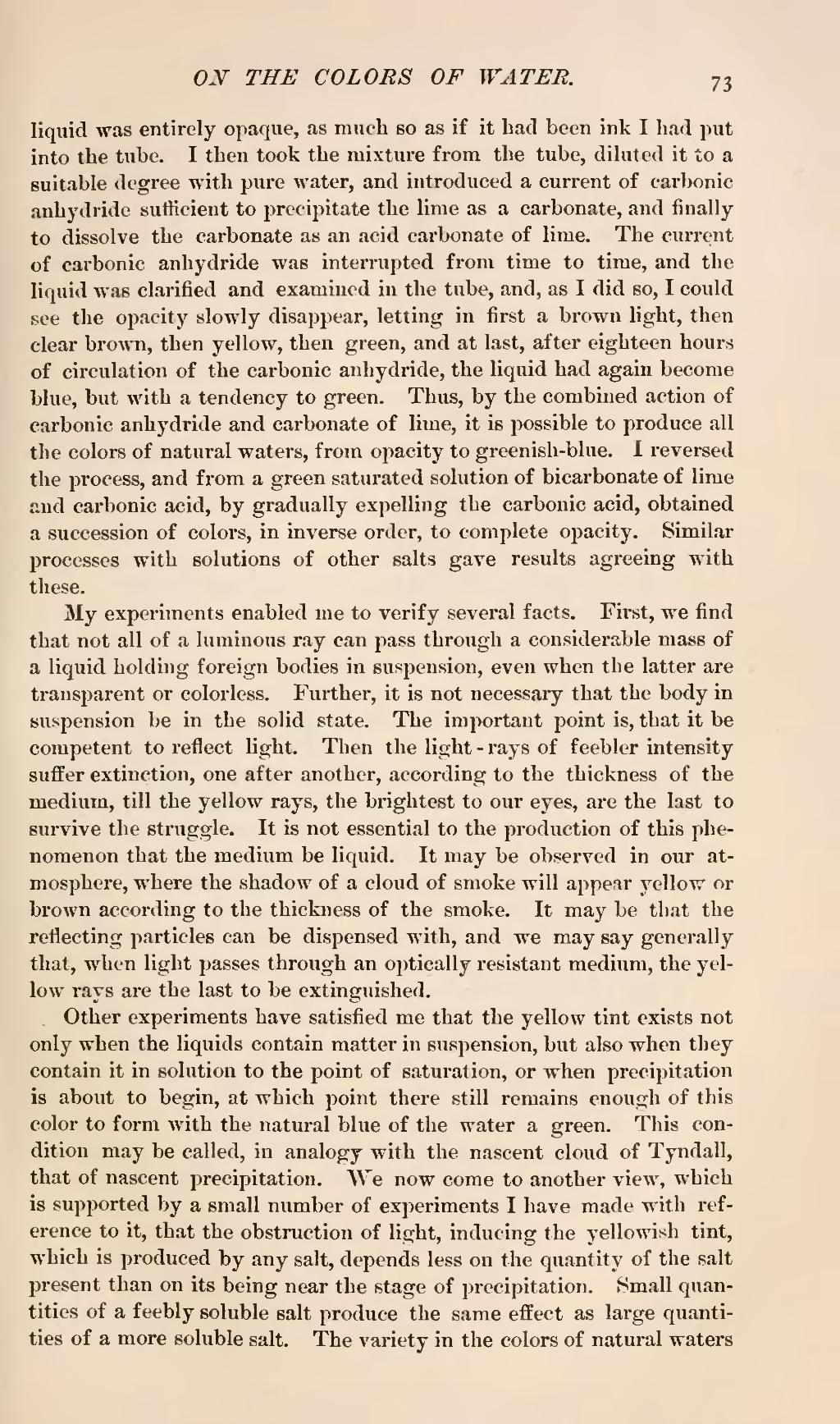liquid was entirely opaque, as much so as if it had been ink I had put into the tube. I then took the mixture from the tube, diluted it to a suitable degree with pure water, and introduced a current of carbonic anhydride sufficient to precipitate the lime as a carbonate, and finally to dissolve the carbonate as an acid carbonate of lime. The current of carbonic anhydride was interrupted from time to time, and the liquid was clarified and examined in the tube, and, as I did so, I could see the opacity slowly disappear, letting in first a brown light, then clear brown, then yellow, then green, and at last, after eighteen hours of circulation of the carbonic anhydride, the liquid had again become blue, but with a tendency to green. Thus, by the combined action of carbonic anhydride and carbonate of lime, it is possible to produce all the colors of natural waters, from opacity to greenish-blue. I reversed the process, and from a green saturated solution of bicarbonate of lime and carbonic acid, by gradually expelling the carbonic acid, obtained a succession of colors, in inverse order, to complete opacity. Similar processes with solutions of other salts gave results agreeing with these.
My experiments enabled me to verify several facts. First, we find that not all of a luminous ray can pass through a considerable mass of a liquid holding foreign bodies in suspension, even when the latter are transparent or colorless. Further, it is not necessary that the body in suspension be in the solid state. The important point is, that it be competent to reflect light. Then the light-rays of feebler intensity suffer extinction, one after another, according to the thickness of the medium, till the yellow rays, the brightest to our eyes, are the last to survive the struggle. It is not essential to the production of this phenomenon that the medium be liquid. It may be observed in our atmosphere, where the shadow of a cloud of smoke will appear yellow or brown according to the thickness of the smoke. It may be that the reflecting particles can be dispensed with, and we may say generally that, when light passes through an optically resistant medium, the yellow rays are the last to be extinguished.
Other experiments have satisfied me that the yellow tint exists not only when the liquids contain matter in suspension, but also when they contain it in solution to the point of saturation, or when precipitation is about to begin, at which point there still remains enough of this color to form with the natural blue of the water a green. This condition may be called, in analogy with the nascent cloud of Tyndall, that of nascent precipitation. We now come to another view, which is supported by a small number of experiments I have made with reference to it, that the obstruction of light, inducing the yellowish tint, which is produced by any salt, depends less on the quantity of the salt present than on its being near the stage of precipitation. Small quantities of a feebly soluble salt produce the same effect as large quantities of a more soluble salt. The variety in the colors of natural waters
